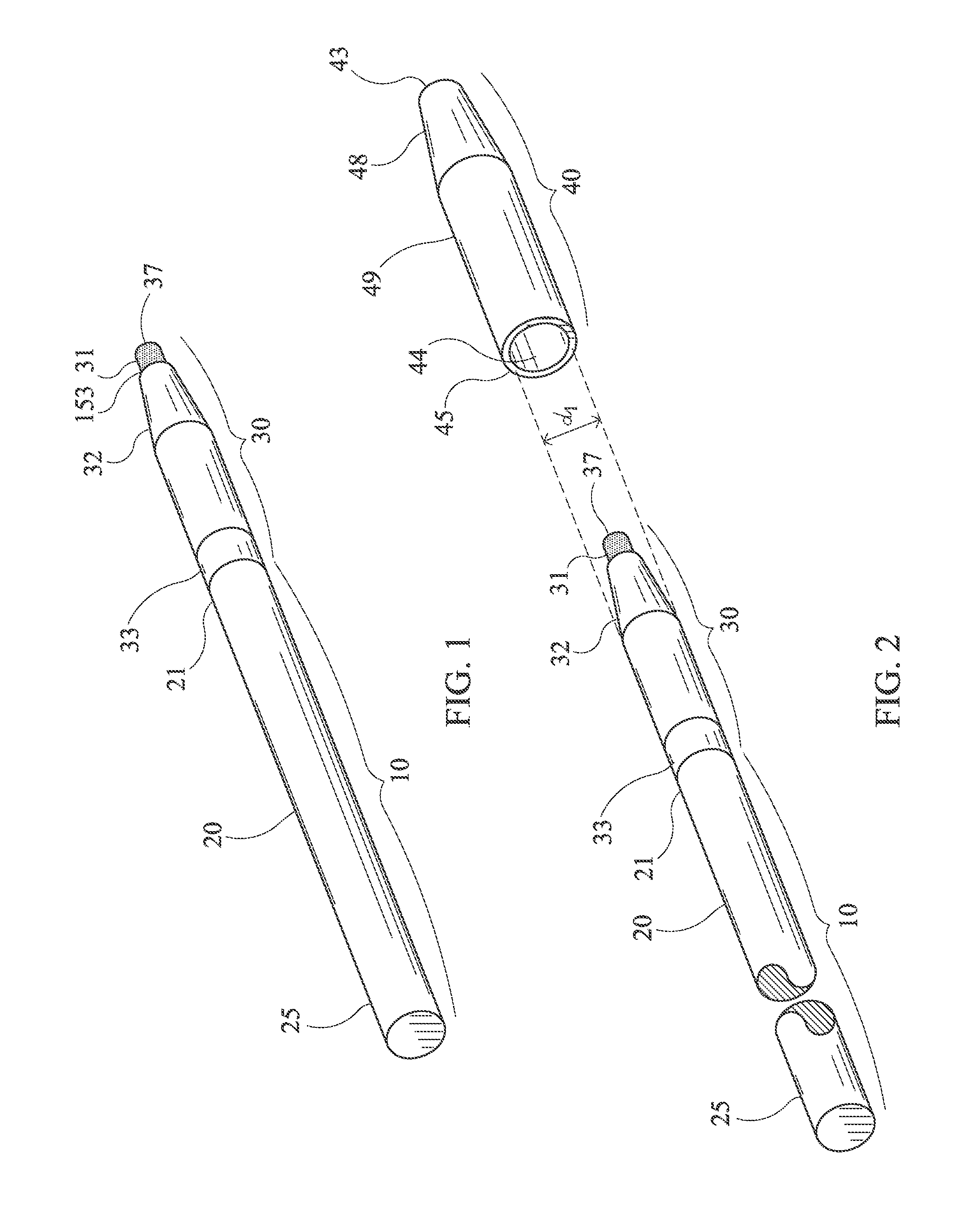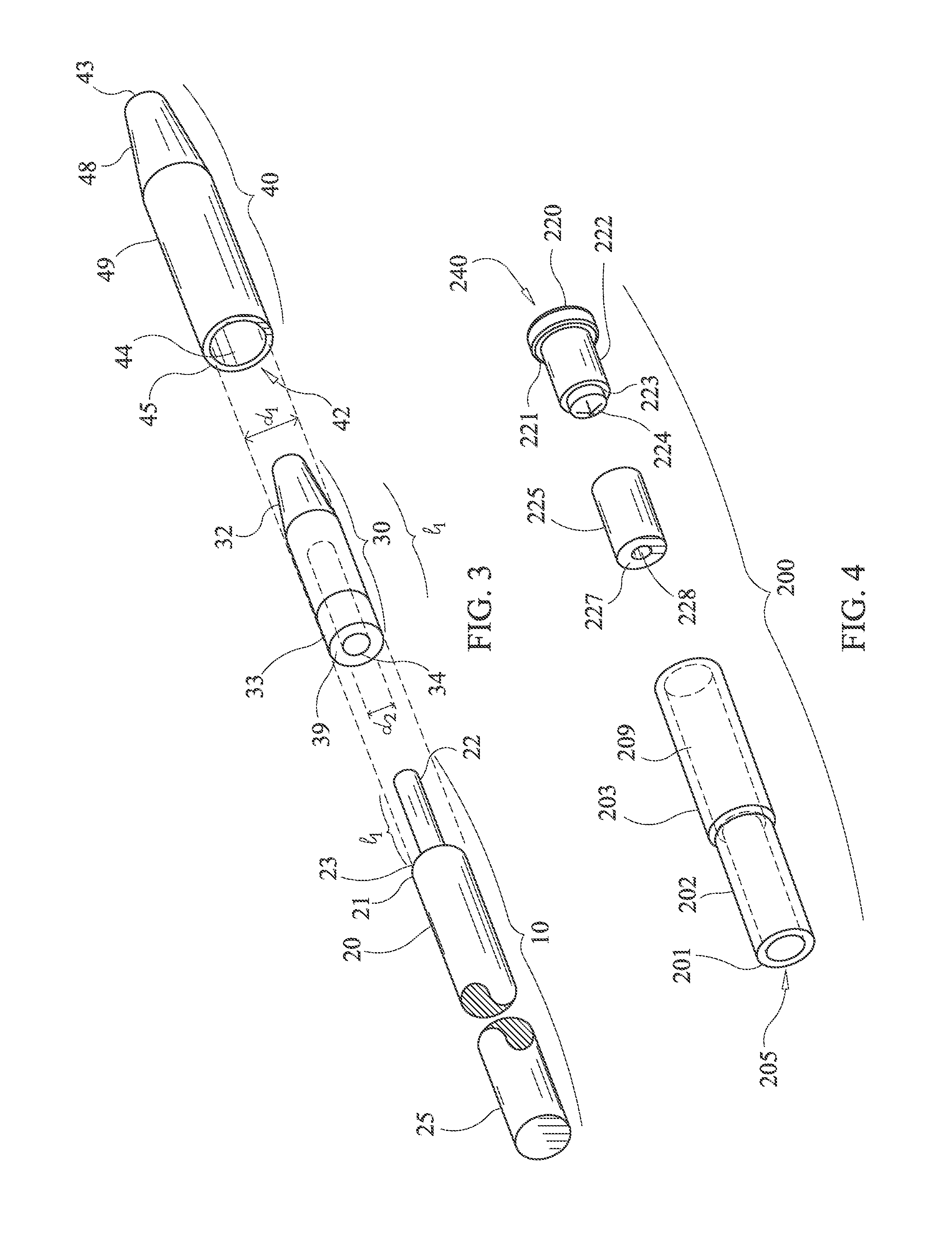Surgical Marker and Cap
a marker and cap technology, applied in the field of surgical markers, can solve the problems of difficult to locate the nib, less accurate mapping points, and surgeons cannot see the targeted tissue directly, so as to reduce the evaporation of ink, increase the surface area of the nib and the absorbent fiber block, and reduce the effect of evaporation
- Summary
- Abstract
- Description
- Claims
- Application Information
AI Technical Summary
Benefits of technology
Problems solved by technology
Method used
Image
Examples
first embodiment
[0054]FIG. 2 shows the surgical marker 30 and rod assembly 10 with a cap 40. The cap 40 is an enclosure with a proximal opening for receiving the tip 37 of the marker 30. The cap 40 has a proximal cylindrical portion 49 and a distal frustoconical portion 48. The distal end 43 of the cap 40 is closed. The cap 40 has an inner tube wall 44. The rod diameter d1 is approximately equal to a diameter of the opening 42. The diameter d1 of the opening in relation to the diameter of the marker should be close enough to allow the cap 40 to receive the surgical mark 30 and form an airtight connection when inserted but still allow the cap 40 to be removed by hand from the surgical marker 30.
[0055]FIG. 3 shows an exploded view of the rod assembly 10, surgical marker 30, and cap 40 that is shown in FIG. 2. In FIG. 3, the nib 31 is not shown. A peg 22 is disposed on a distal face 23 of the rod 30. In the preferred embodiment, the peg 22 is cylindrical. The peg 22 has a length l1 and a diameter d2. ...
second embodiment
[0061]FIG. 6 shows the cap 200 according to the invention. An enclosure for a marker 30 is formed by a generally cylindrical body that is capped at a distal end and open at a proximal end. A cylindrical, narrow wall 202 is provided at a proximal end of the cap 200. An inner diameter of the narrow wall 202 is sized to fit over an outer diameter of the marker 30. The narrow wall 202 has an opening 205 for receiving the distal end of the marker 30 as shown in FIG. 4. A flange 201 is provided to form an air-right fit when the marker 30 is inserted in the opening 205 of the cap.
[0062]The cap 200 includes an absorbent fiber block 225. The absorbent fiber block 225 is soaked with ink. The absorbent fiber block 225 contacts the nib 31 of the marker 30 when the marker 30 is inserted in the cap 200. Ink diffuses from the absorbent fiber block 225 into the nib 31 to keep the nip 31 moist and inked. As shown in FIG. 11, the absorbent fiber block 225 has a dimple 228 formed in the absorbent fibe...
PUM
 Login to View More
Login to View More Abstract
Description
Claims
Application Information
 Login to View More
Login to View More - R&D
- Intellectual Property
- Life Sciences
- Materials
- Tech Scout
- Unparalleled Data Quality
- Higher Quality Content
- 60% Fewer Hallucinations
Browse by: Latest US Patents, China's latest patents, Technical Efficacy Thesaurus, Application Domain, Technology Topic, Popular Technical Reports.
© 2025 PatSnap. All rights reserved.Legal|Privacy policy|Modern Slavery Act Transparency Statement|Sitemap|About US| Contact US: help@patsnap.com



